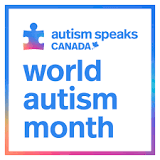As I write my monthly articles I try to find specific ailments that massage has been proven to help with to inform a variety of people as to how I may be able to help them. I have touched on many different health topics like arthritis, carpal tunnel syndrome, stress, circulation, fibrolmyalgia, dementia and many, many more. I truly hope that this information helps people reach out and try the many different alternative therapies that are available. This month I’m going to touch on Austism as April 2nd is World Autism Awareness Day.
World Autism Awareness Day seeks to raise the global understanding and acceptance of people with autism. The observance also advocates for social inclusion, emphasizing the need to support and celebrate the neurodiverse community’s unique talents and abilities. It highlights pertinent aspects like the need for research, diagnosis, societal awareness, early intervention, and access to support services. Additionally, the day serves as a wake-up call to ensure policy development and legislation appropriately address the needs of individuals living with autism.
The Autism Awareness Centre Inc. provides this simple definition, Autism is a lifelong, nonprogressive neurological disorder typically appearing before the age of three years. The word “autism” means a developmental disability significantly affecting verbal and non-verbal communication and social interaction.
According to AutismBC.ca, Autism is a lifelong neurodevelopmental difference that impacts all aspects of a person’s life. It is characterized by differences in social communication and interaction and by restrictive and repetitive behaviours, actions, or interests. Every autistic person has unique strengths and support needs which can fluctuate throughout a person’s life.
Early intervention and therapies can make a big difference in a person’s skills and outcomes later in life. Evidence is showing more and more that massage benefits people with Autism. “People with autism-spectrum disorders often struggle with increased sensitivity to sensory stimuli, including tactile stimulation, and massage provides a comforting experience of tactile stimulation while also helping to decrease pain amplification through desensitization,” explains Dustin P. Wallace, PhD.


